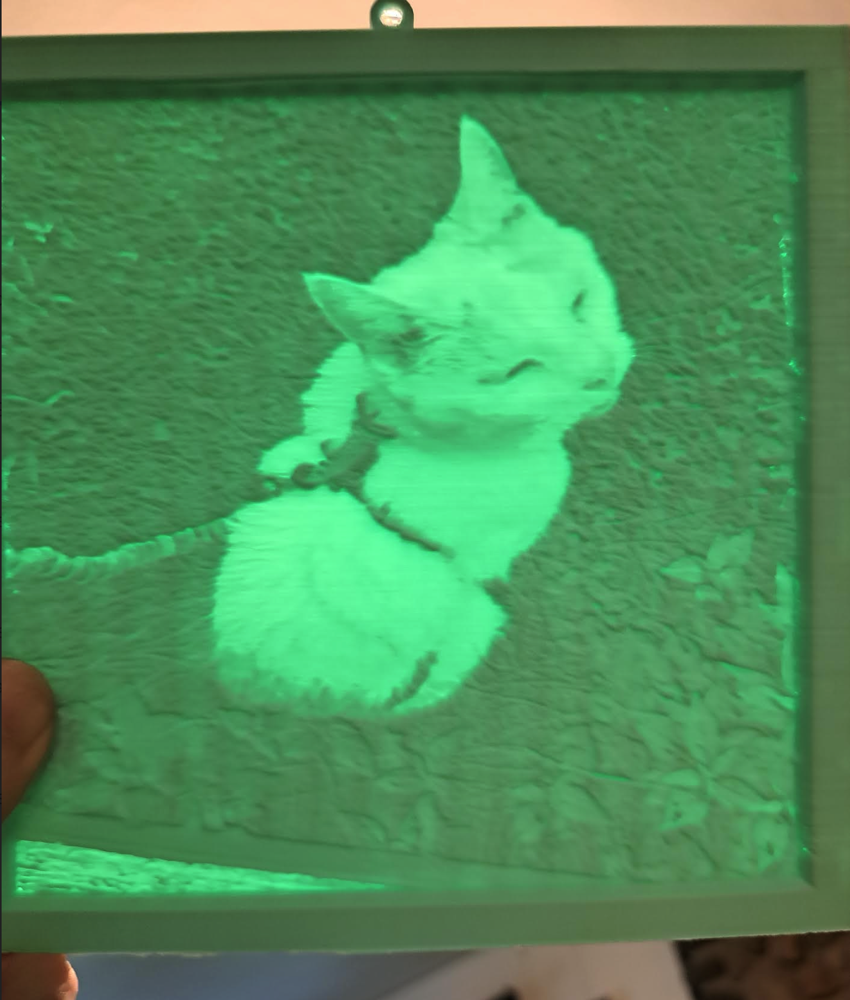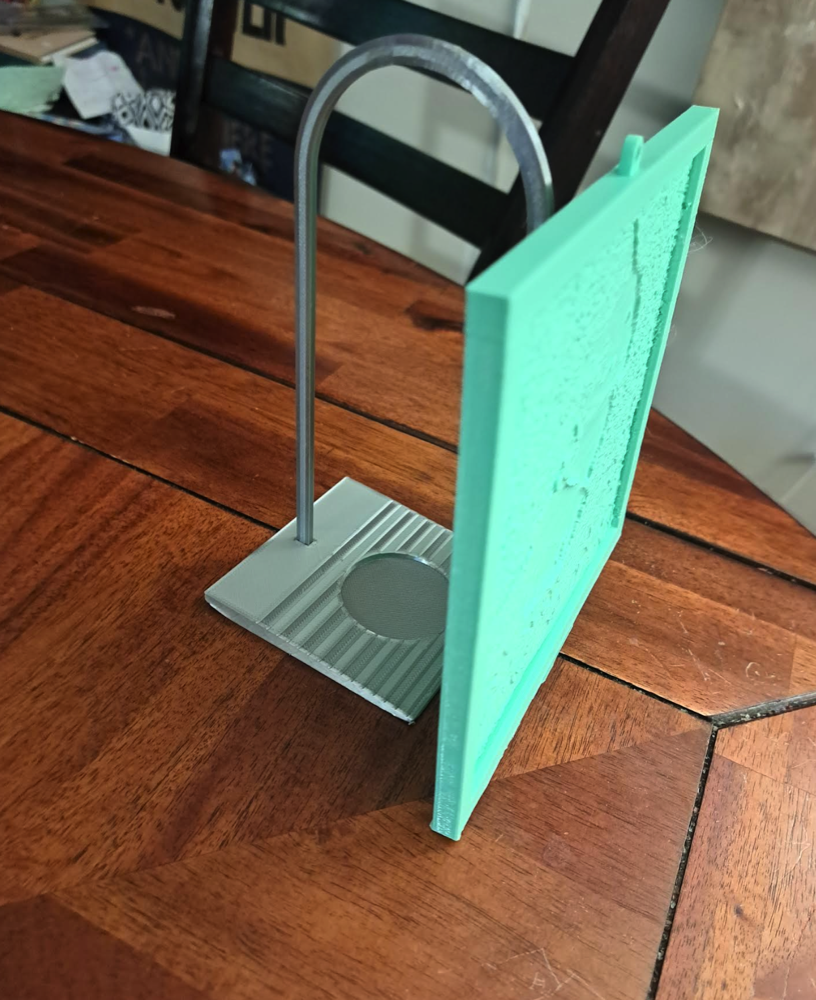For years, I’ve been ordering 3D printed lithopanes of my friends’ pets after they pass away—usually from Etsy. Lithopanes, a 19th-century art form, use thin materials to create images visible when held up to light. Originally made of porcelain for lamps and nightlights, they’ve found new life with 3D printing technology. Today, with free software and a standard printer, anyone can create them using just a photo and some filament.

I only recently learned that the campus library had 3D printers. Curious, I visited the design lab, totally unprepared. The staff there were incredibly helpful—they told me I’d need to bring in my file on a USB drive, and when I mentioned lithopanes, they suggested printing it vertically for a cleaner result (though it would take longer).
I used lithophanemaker which offers templates for a variety of shapes—hearts, nightlights, Christmas ornaments, cubes, even cylindrical lamps. After uploading a photo of Snapdragon, I initially came back with a pre-sliced .gcode file. Unfortunately, it wasn’t compatible with the lab’s printers, so I had to run home to retrieve the original .stl version. Finally, on my third trip, I was able to print.

White filament is typically used, but since it was out of stock, I chose a translucent mint green—perfect for a photo of Snapdragon outdoors in the grass. The print took around 7 hours and came out great—much cleaner and clearer than a horizontal version I had printed elsewhere.
I’m so glad I learned how to make these myself. Not only did I get to create something meaningful, but I also got to explore a beautiful blend of personal memory and digital fabrication.